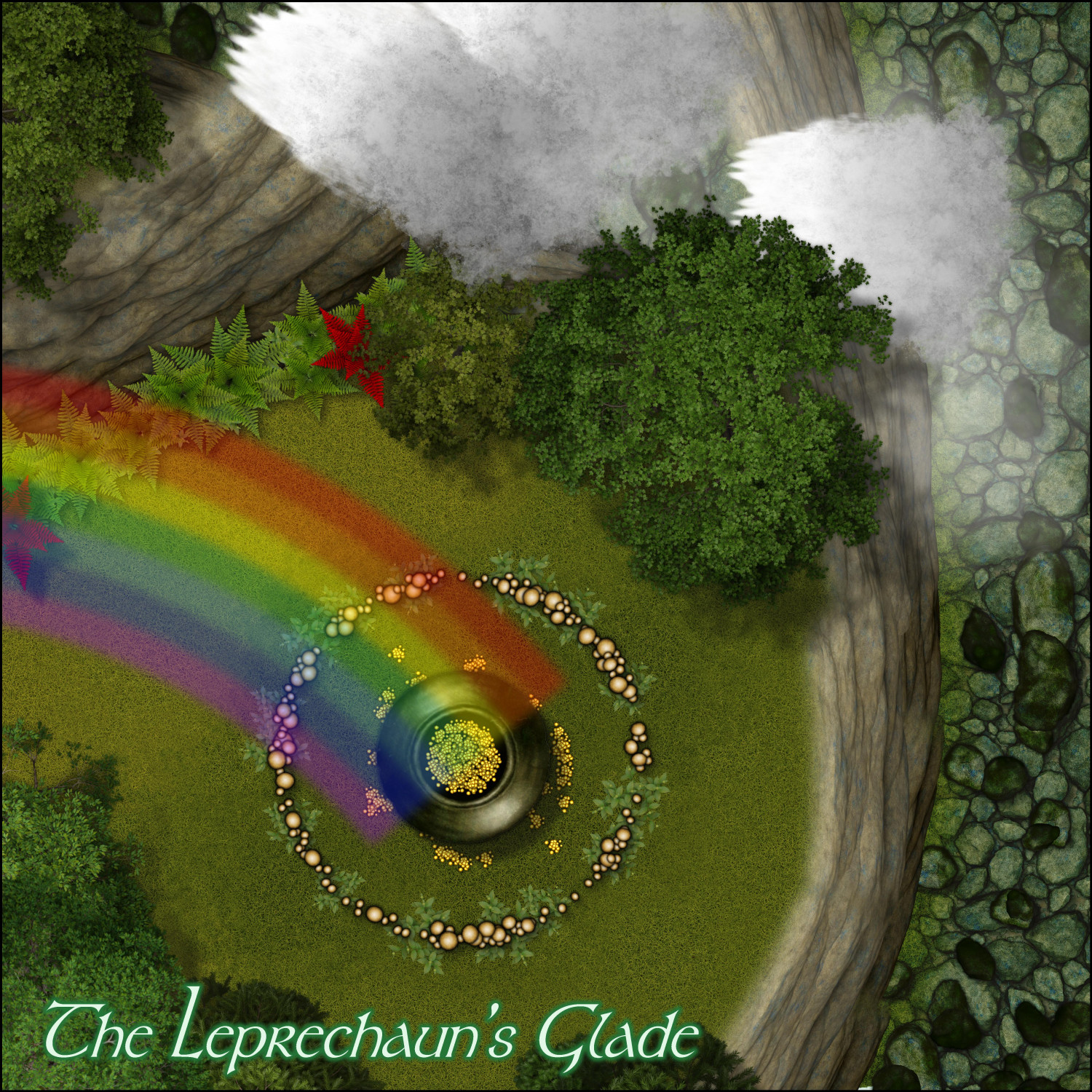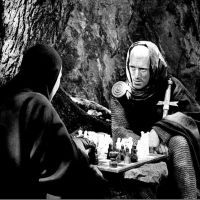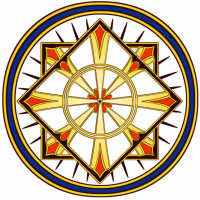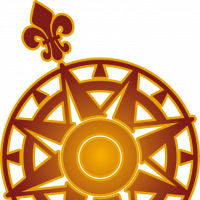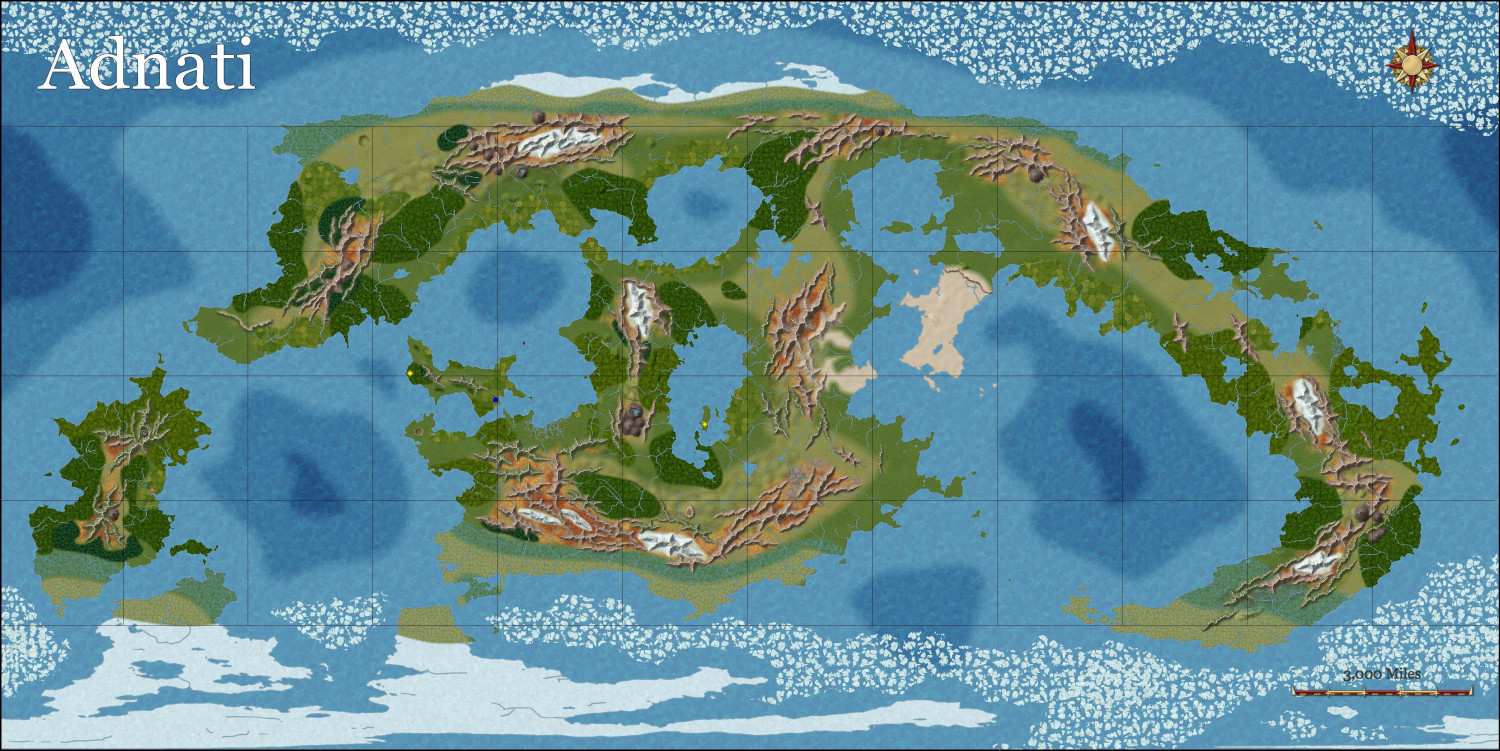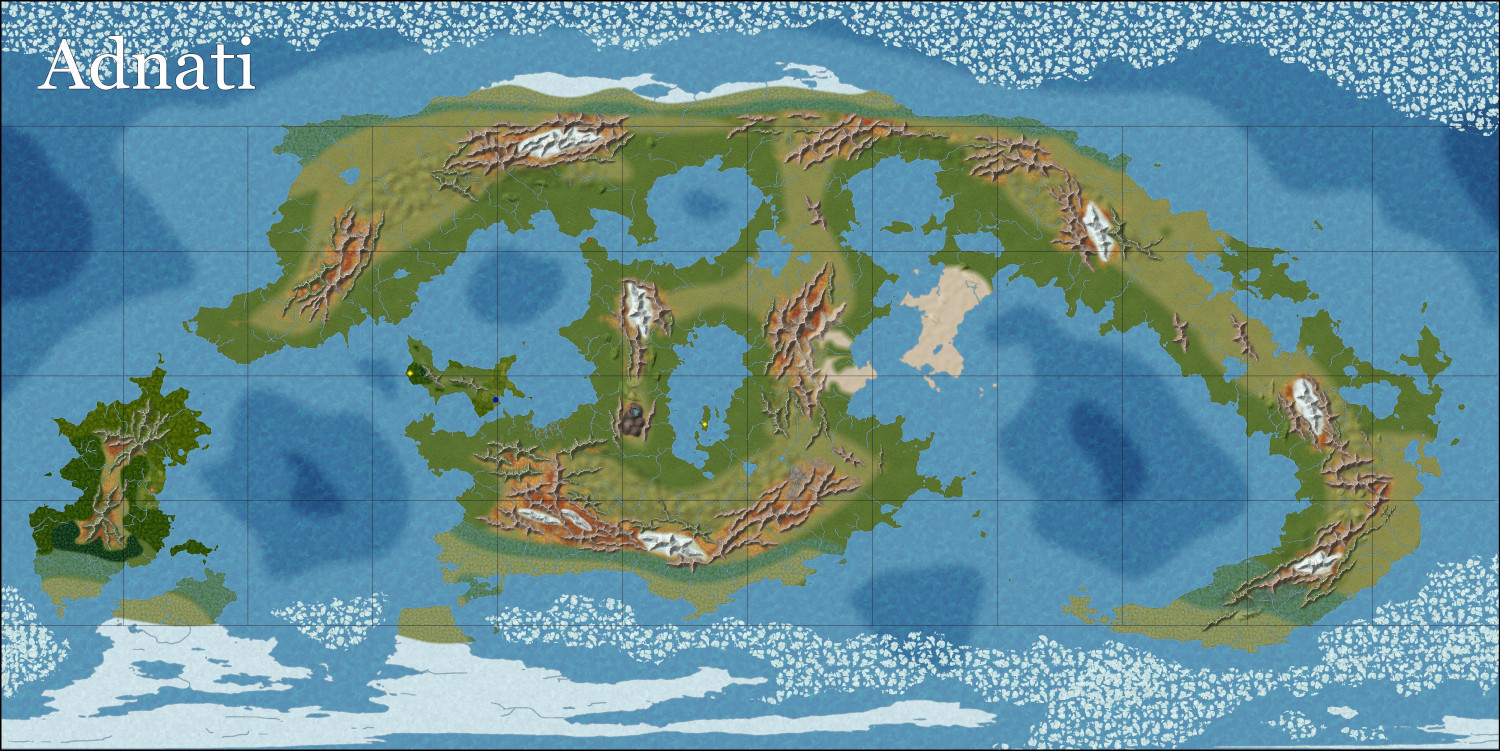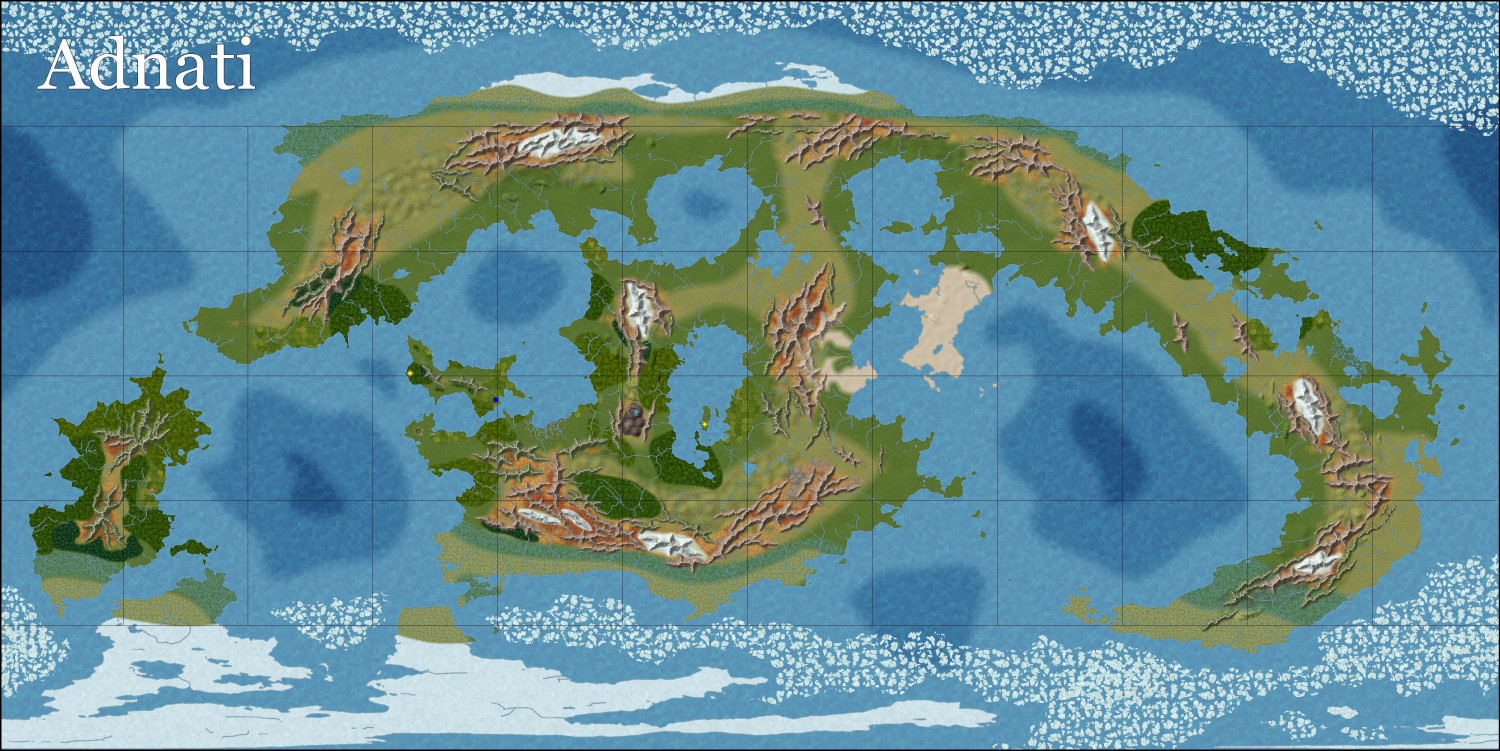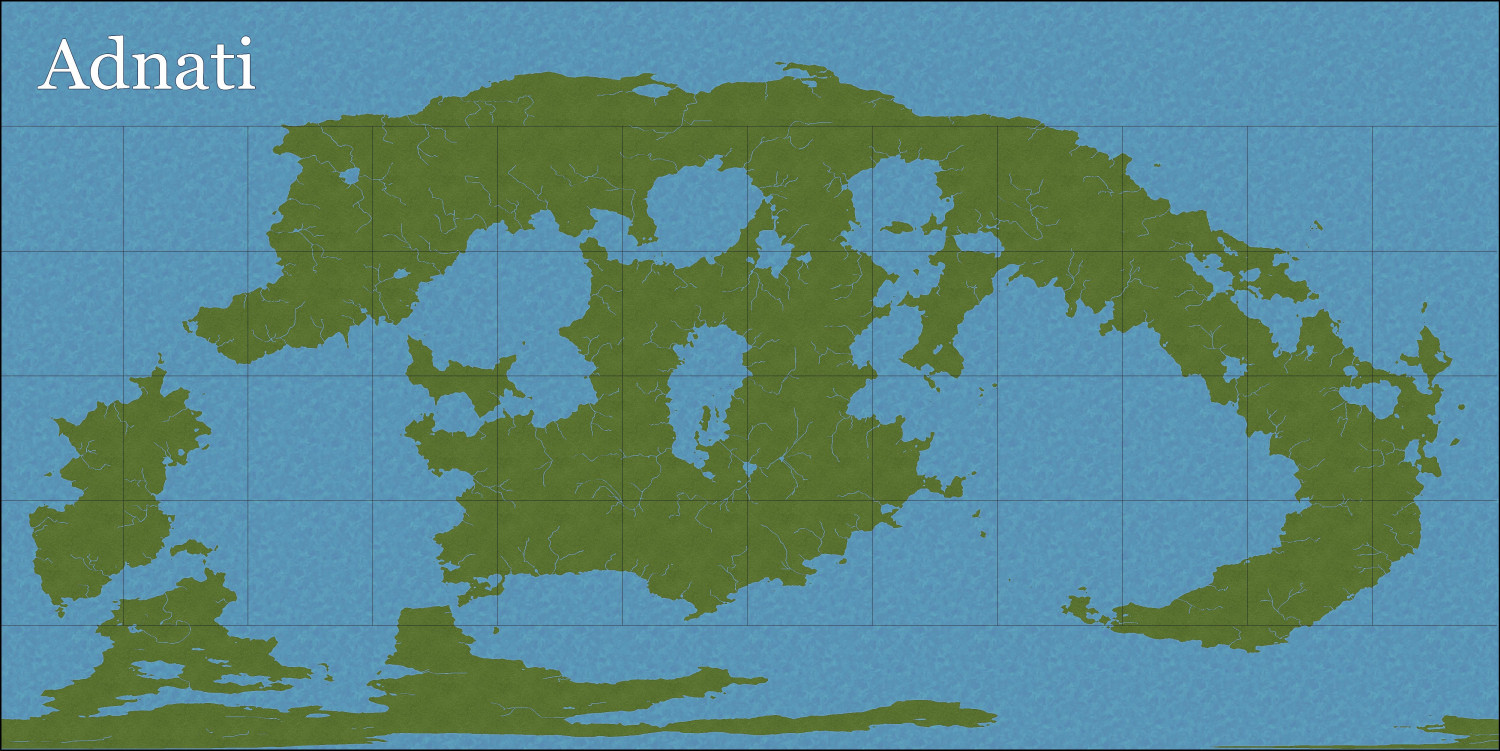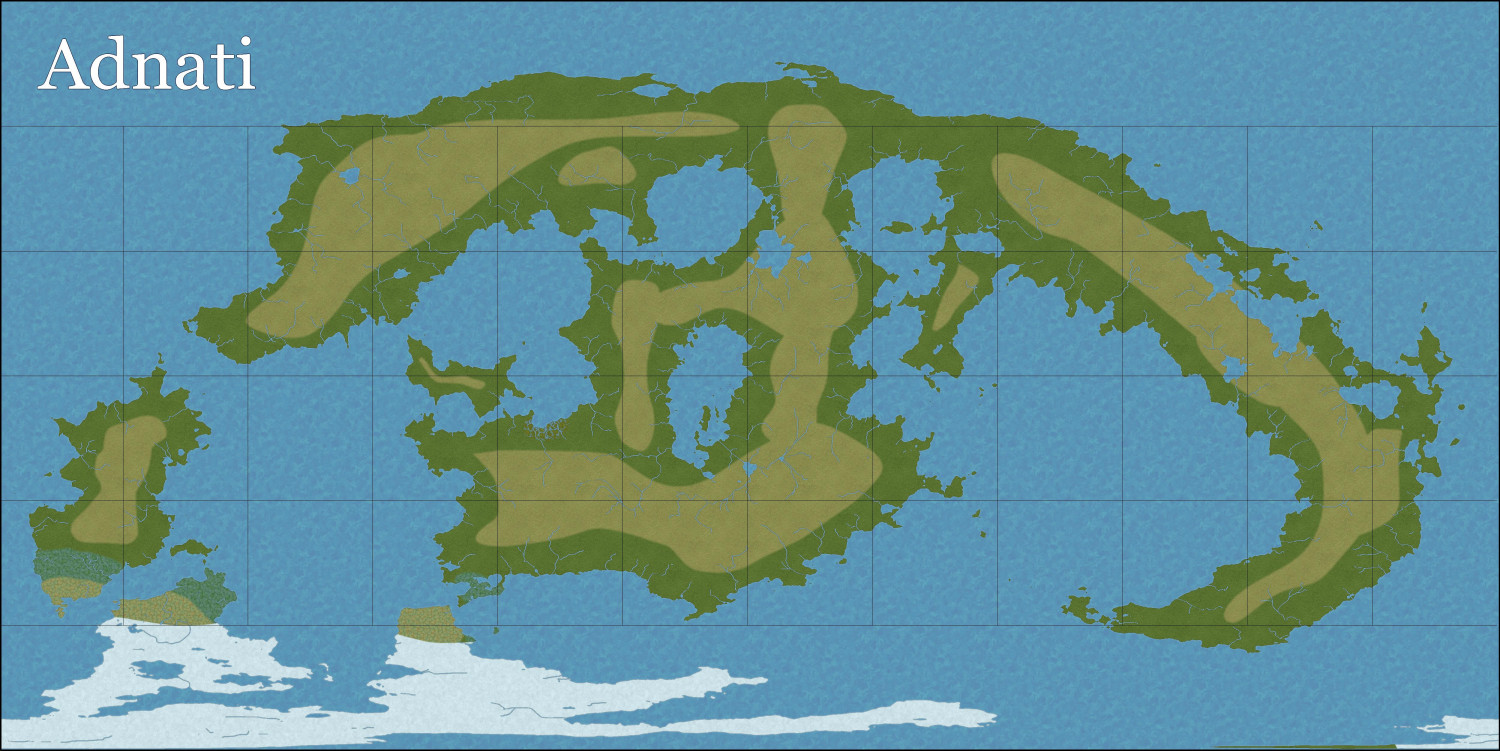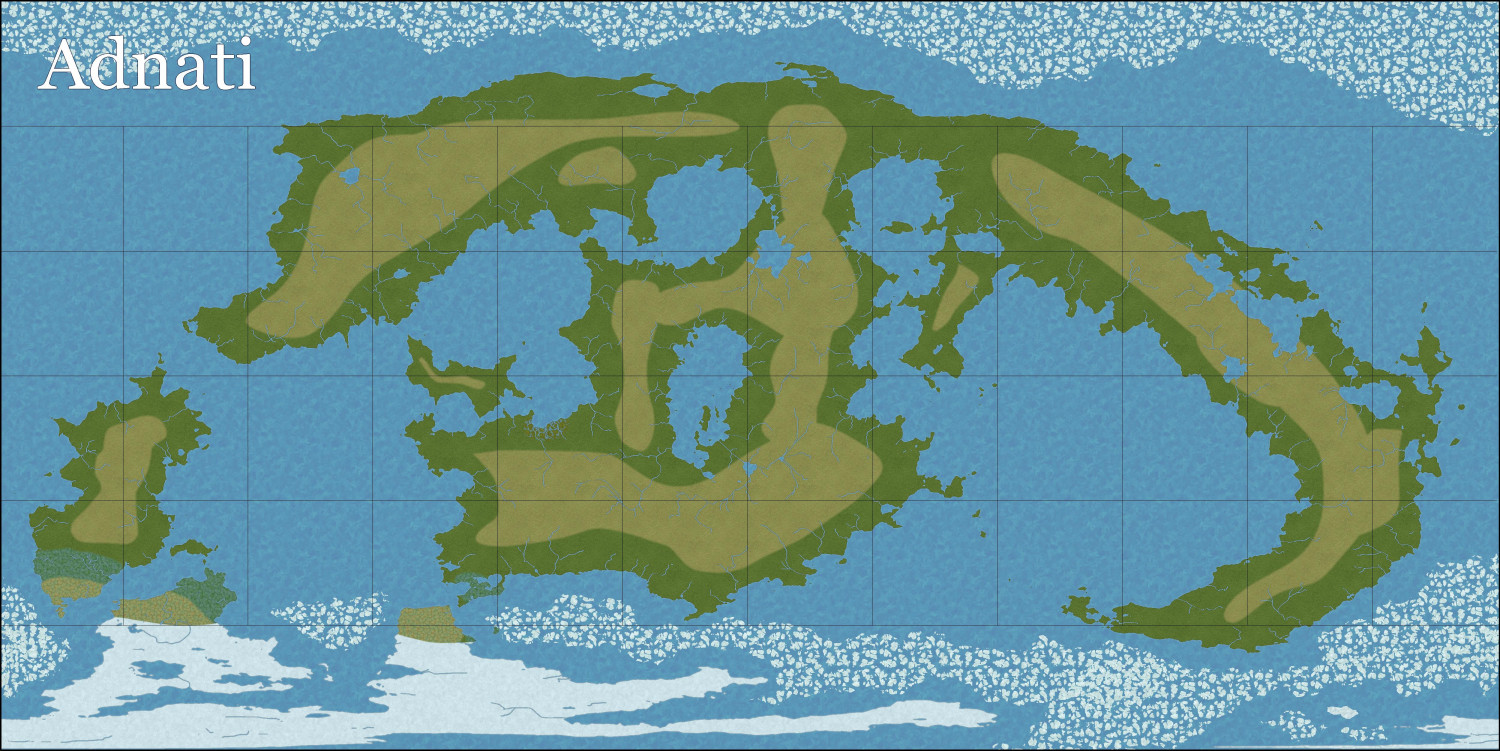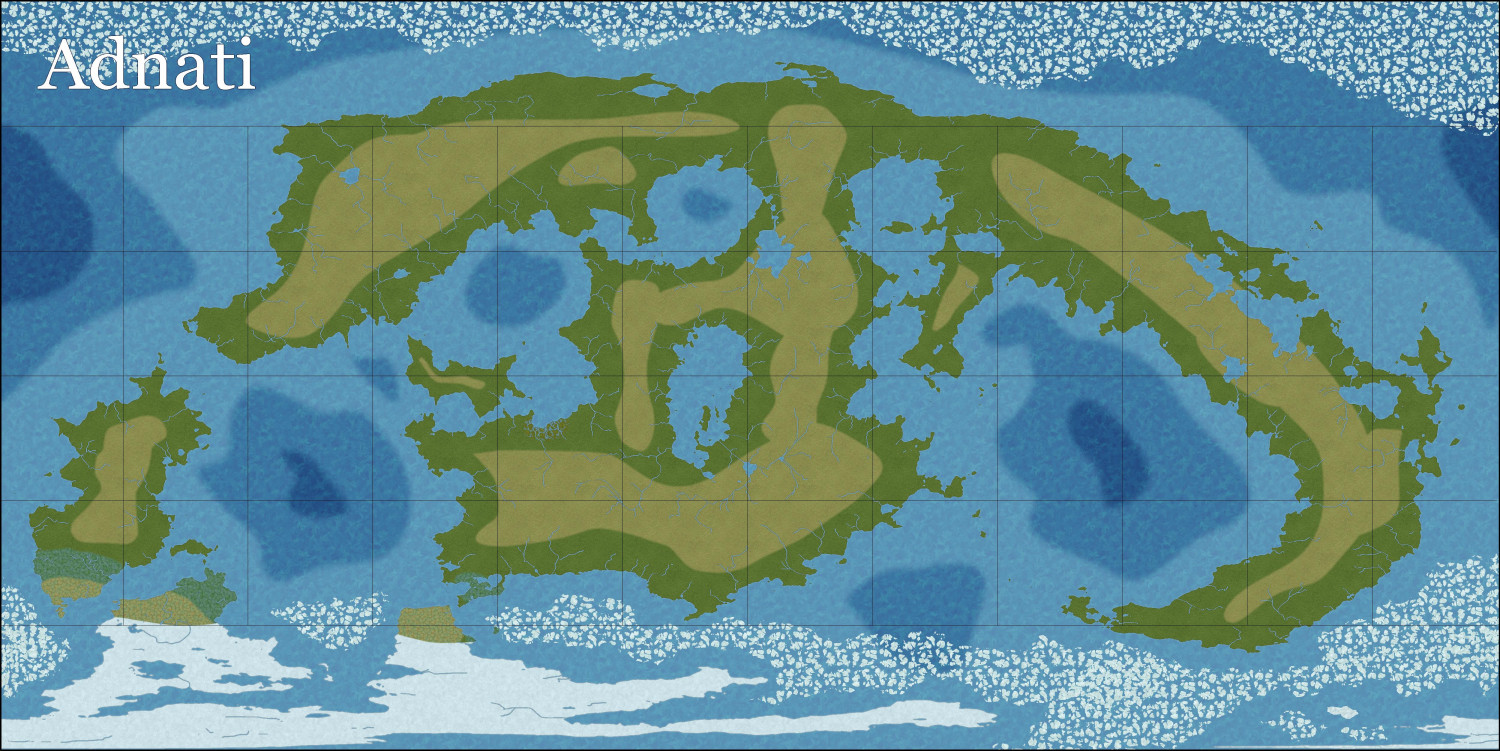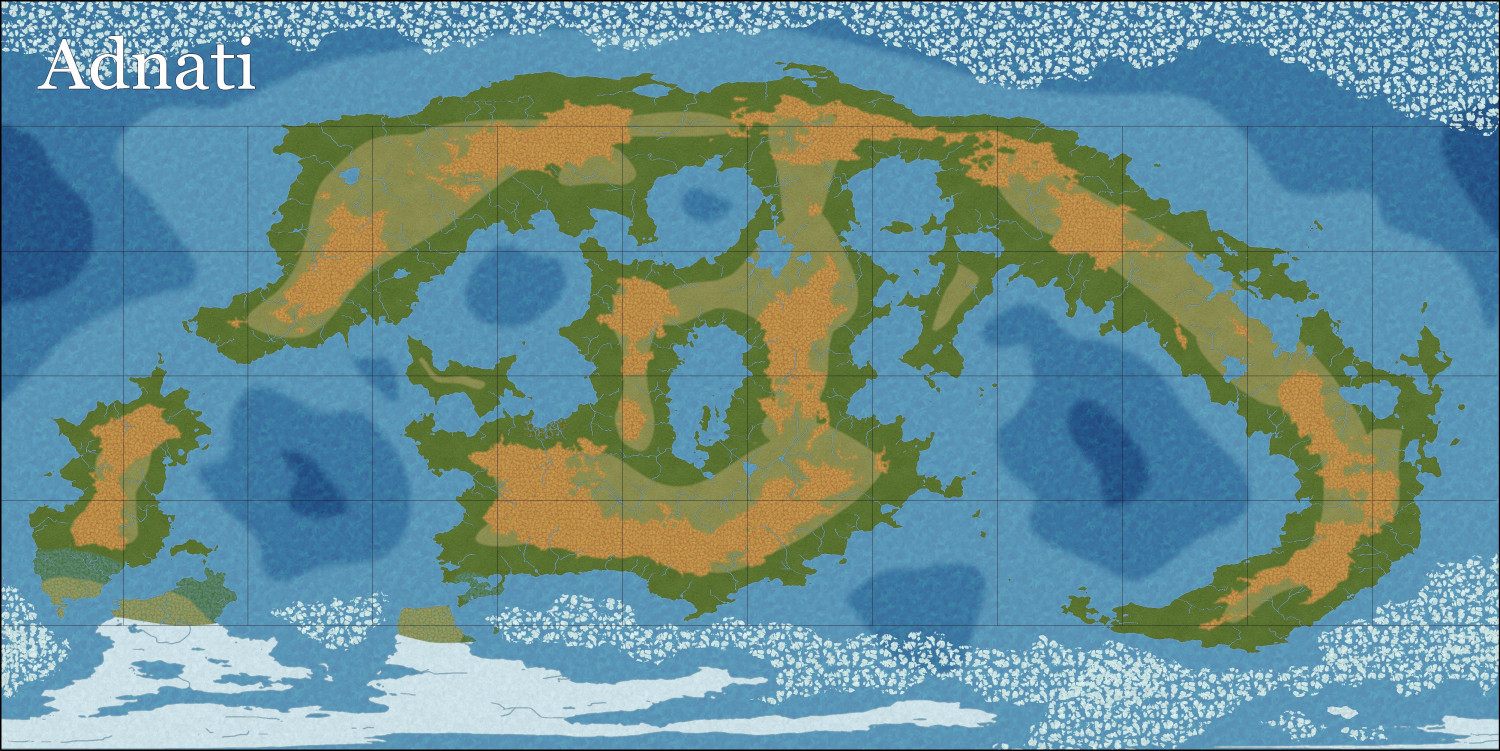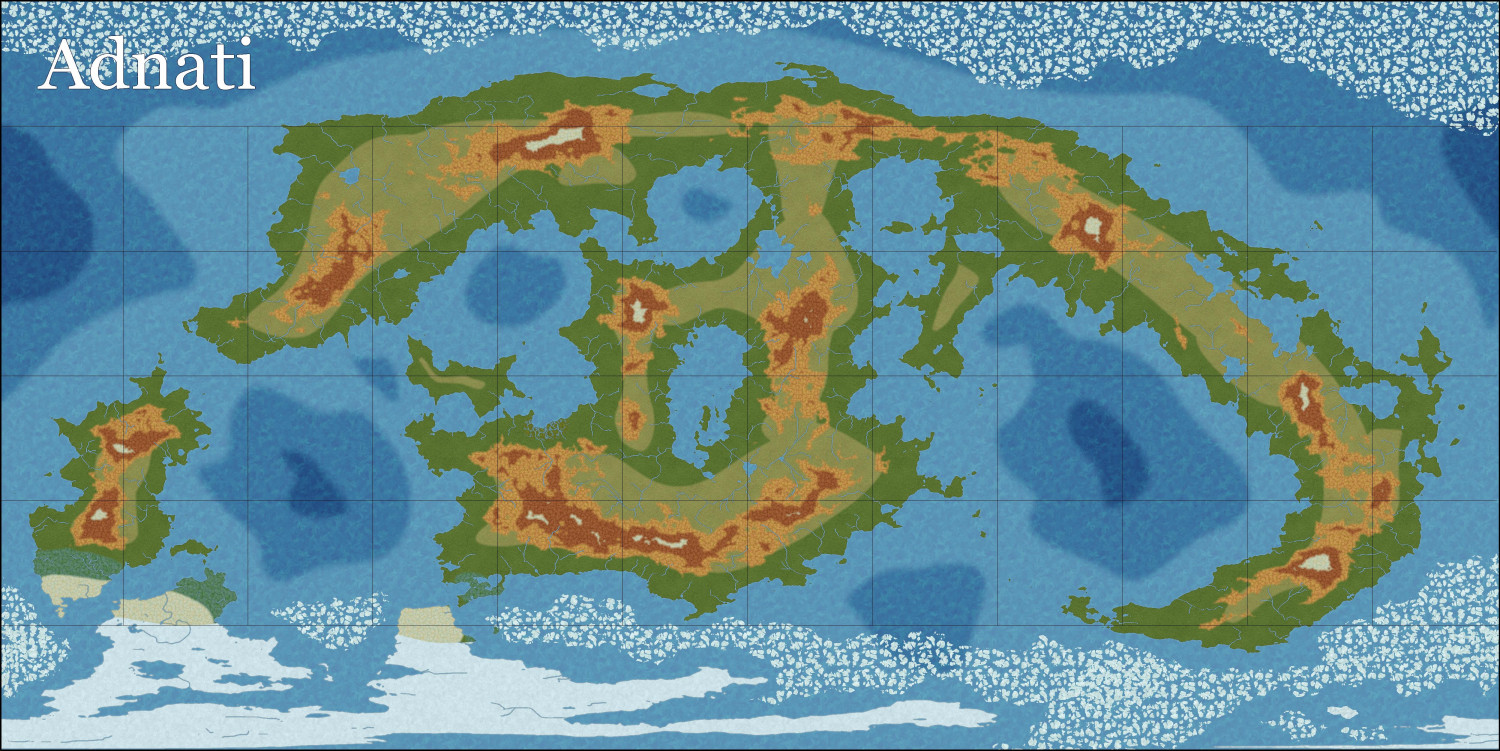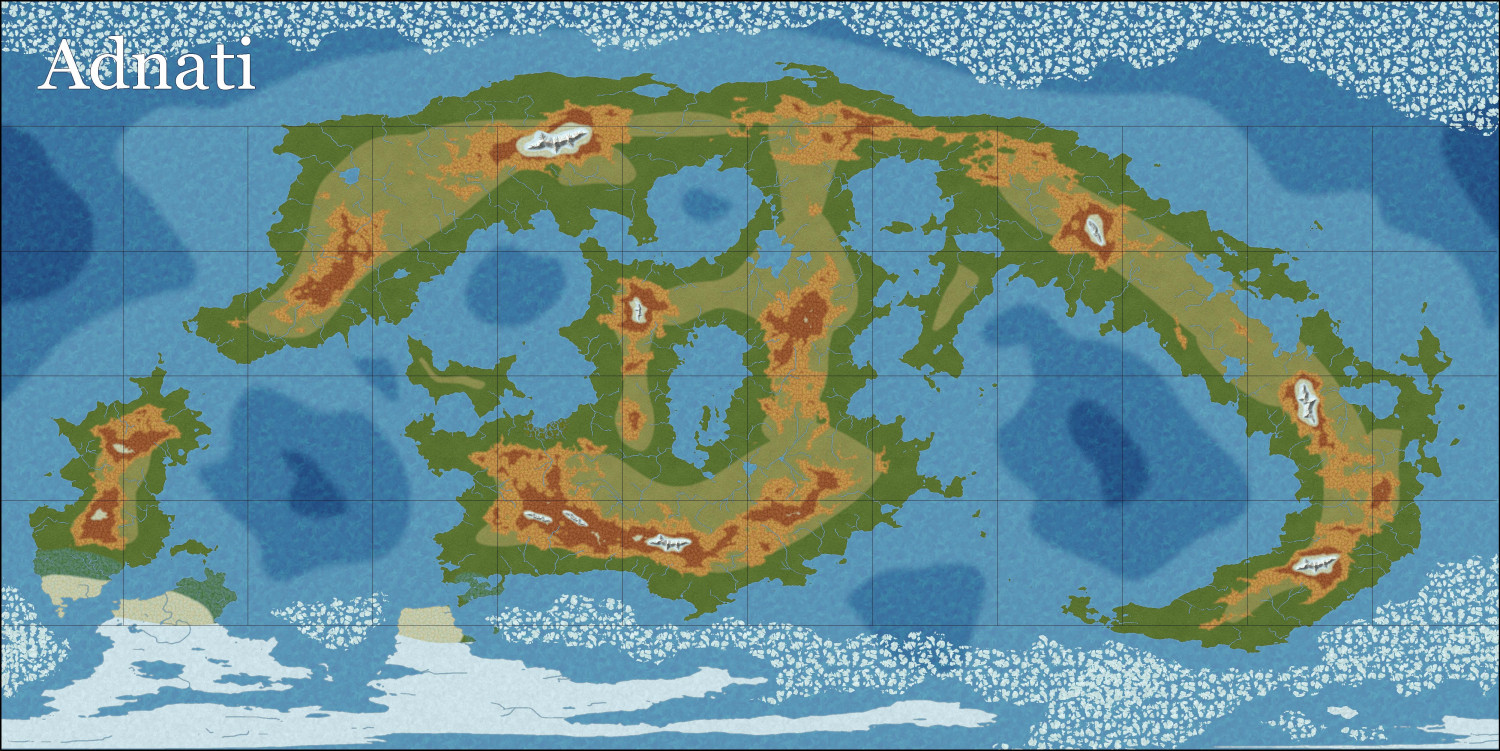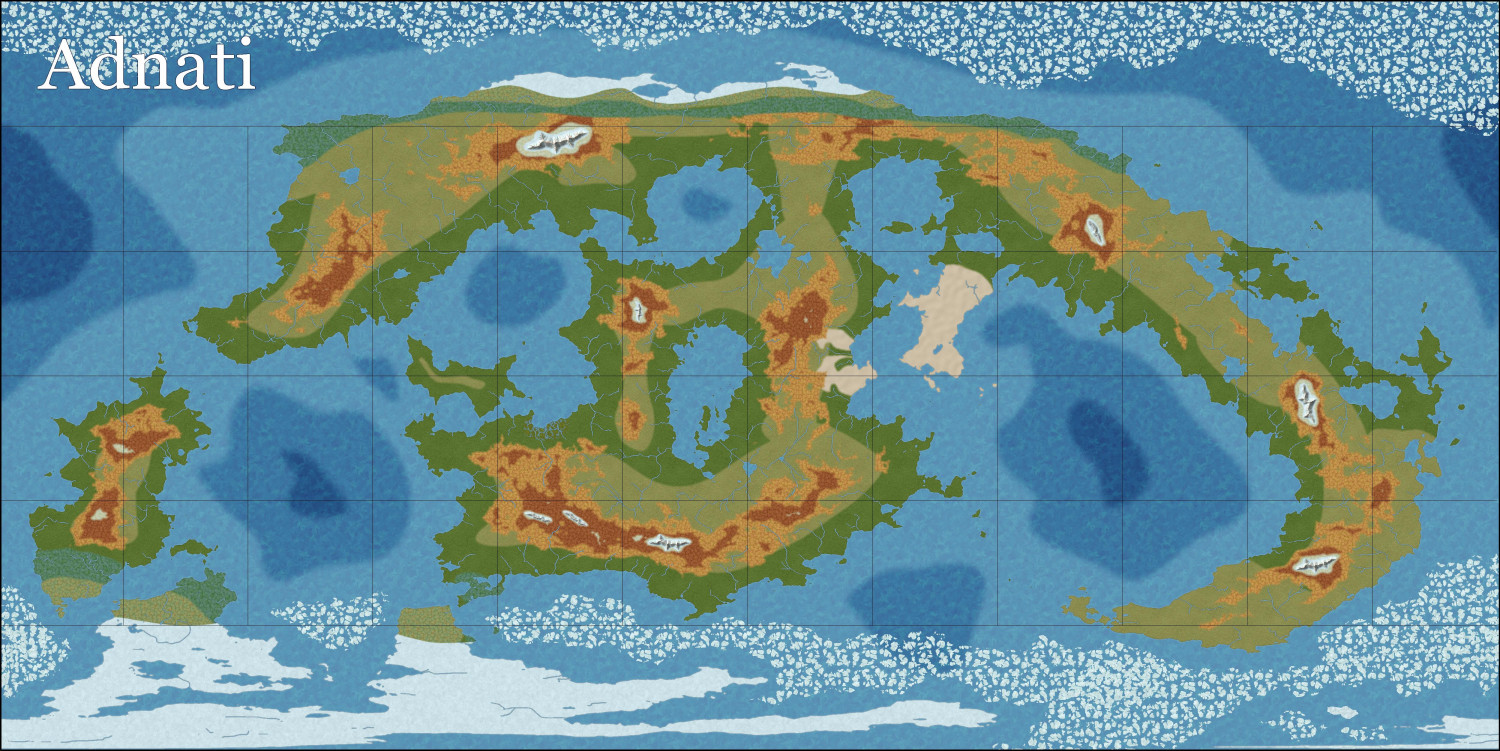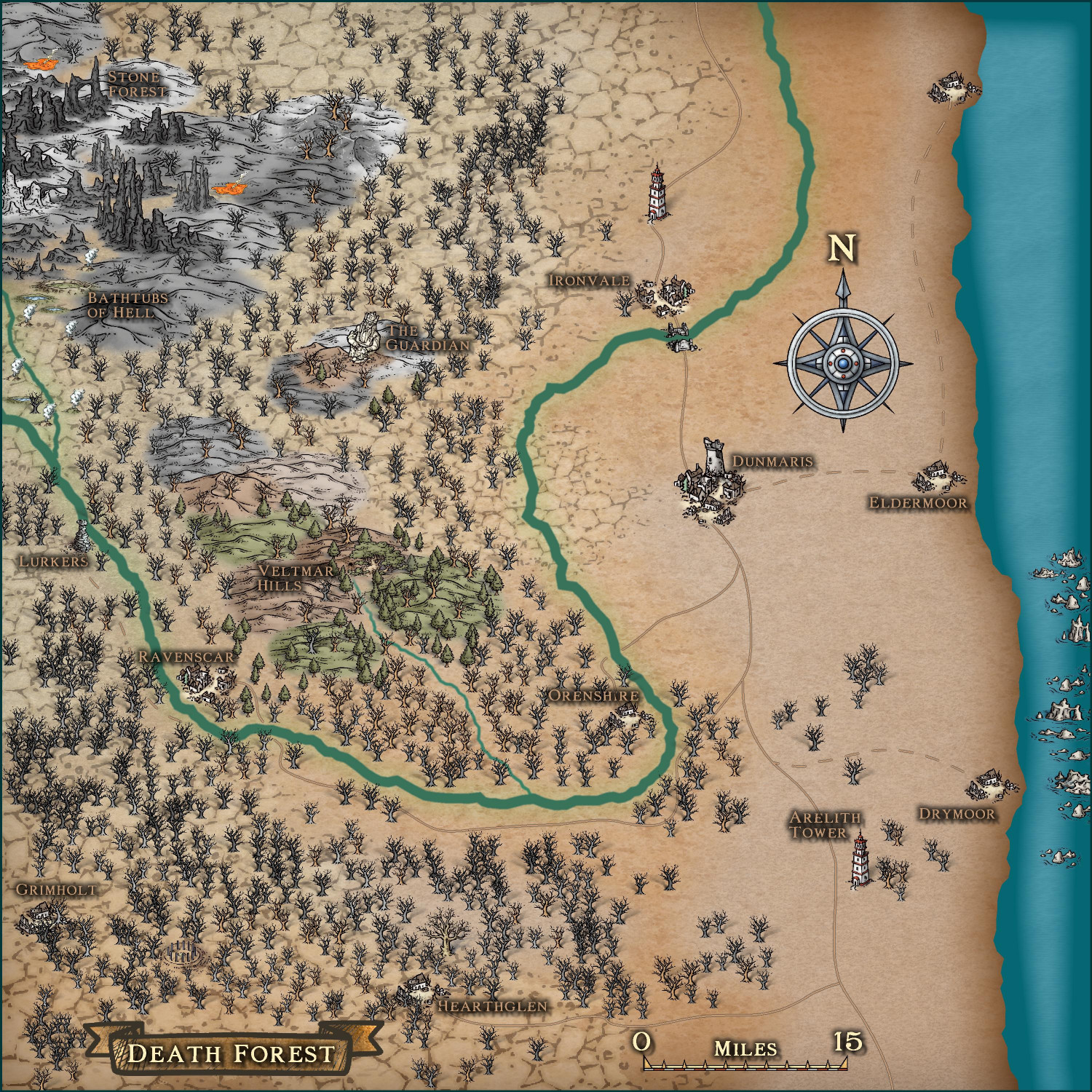Royal Scribe
Royal Scribe
About
- Username
- Royal Scribe
- Joined
- Visits
- 8,807
- Last Active
- Roles
- Member
- Points
- 3,198
- Birthday
- February 5, 1968
- Location
- San Francisco, California
- Real Name
- Kevin
- Rank
- Mapmaker
- Badges
- 16
Reactions
-
Lucky Leprechaun
-
[WIP] Adnati - Birdseye Continental
-
[WIP] Adnati - Birdseye Continental
-
[WIP] Adnati - Birdseye Continental
Okay, here's the progress I've made so far.
After lots of experimentation, I ended up going with a default width of 6 for the rivers.
Then I added a grid brought in from Fractal Terrains to show the major latitude lines. This shows the equatorial line in the middle, with +/- 30 degrees latitude for the lines above and below the equator, and then +/- 60 degrees latitude for the top and bottom lines.
For context, cities like Cairo, Egypt and Austin, Texas are at the 30 degree latitude. Helsinki, Finland is at the 60 degree latitude. If anyone is interested, I once compiled an Excel spreadsheet of the longitudes and latitudes of major cities in the real world to give me some context for weather patterns and biomes for places in my campaign world.
Next, I drew in some lighter grass areas inland, leaving the darker green more to the coasts. (A little sloppy, but we still have mountains coming.) And I added snow to the equivalent of the Antarctic region, and a little bit of tundra.
After that, I added some icebergs in the polar oceans.
Then I added some contours to the oceans.
Here's the first step at creating mountains. I copied in a higher elevation contour from a Jerion-style export from FT, and then used Change Properties to change it to the Alpine terrain, placing it on the appropriate sheet and layer. Fortunately, I made a backup of my FCW file, which was good because I didn't like my first attempt and tried again with an even higher elevation. I also used the Explode "Straight to Smooth" option to smooth it out a little.
Then an even higher elevation for the Scorched Alpine.
And then copied in one very high elevation. I changed this to the Light Tundra terrain but created a TERRAIN TUNDRA LIGHT 2 sheet for it, where I could lighten it a bit. (Accidentally lightened it on the non-alpine bits on the lower left continent as well, but that gets fixed later.)
I added some snowy ridges and ripples to the alpine tundra areas, and then drew in a tight field of snow around them. These are the highest mountains in the world.
Finally (so far), I added more snow in the very north, more tundra in the northern and southern areas, a prominent desert area (my world's equivalent of the Saudi Arabian peninsula), and more of the lighter grass.
Much more to come. Still have to add lots more (non-snowy) mountain ridges and ripples, hills and uneven terrain, forests, and other natural features.
-
Community Atlas - Fonlorn Archipelago - Bleakness - Death Forest.
Here it is with the missing asset deleted.


